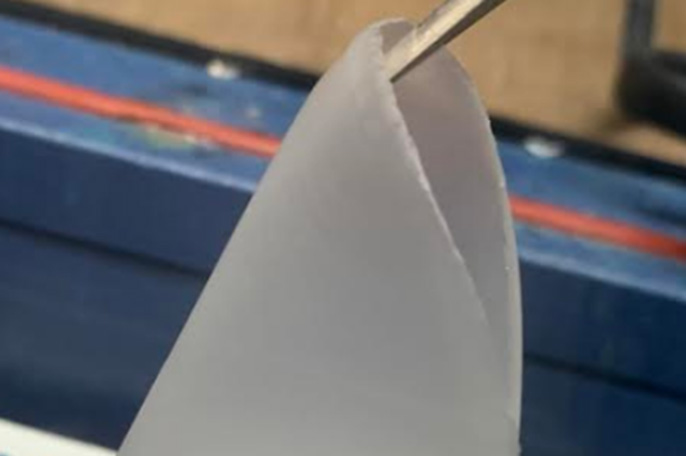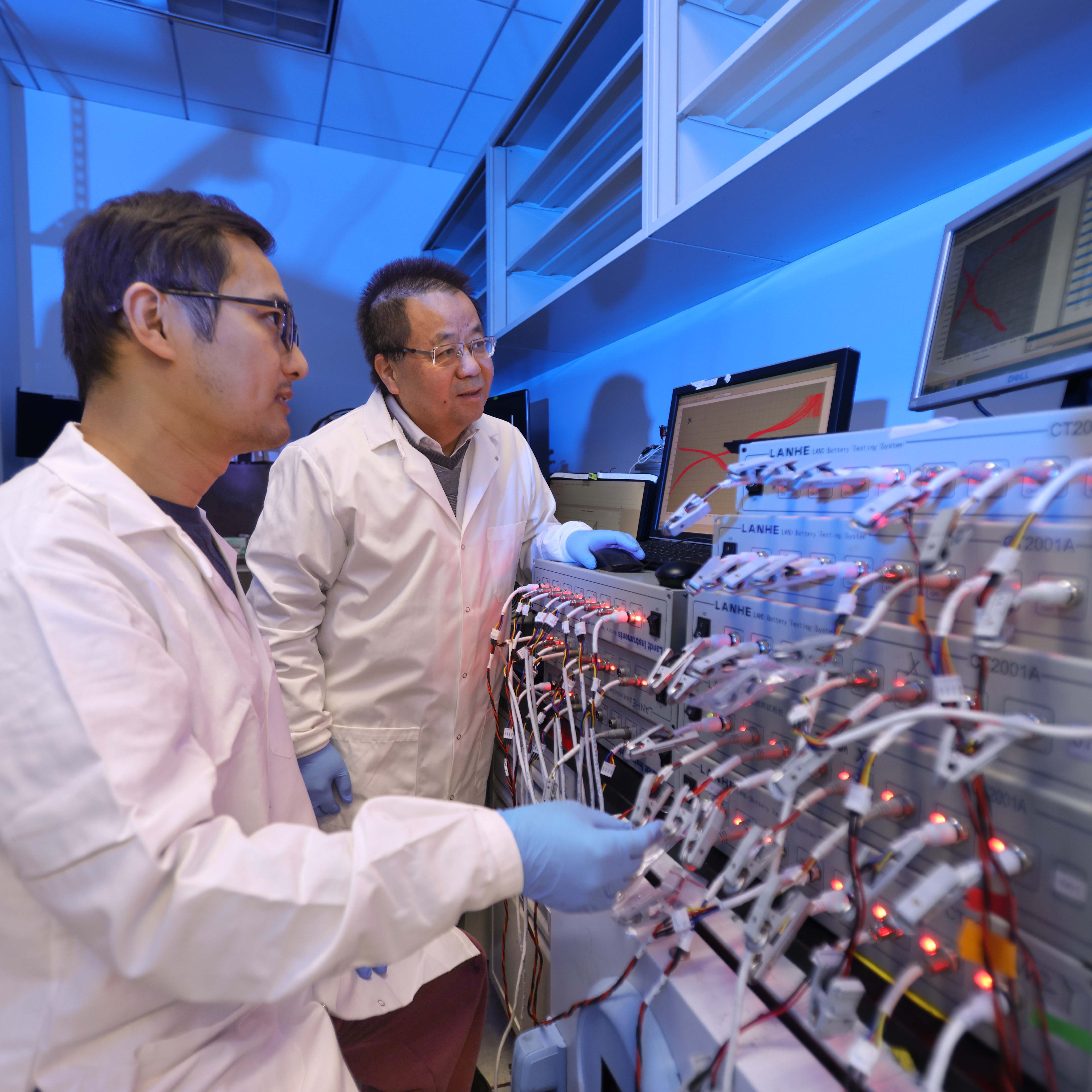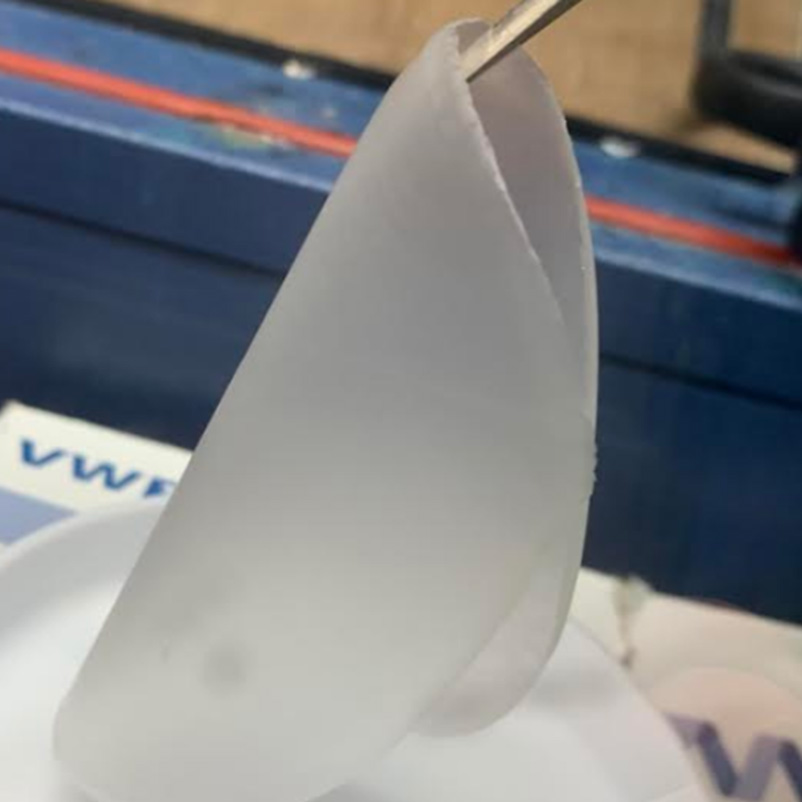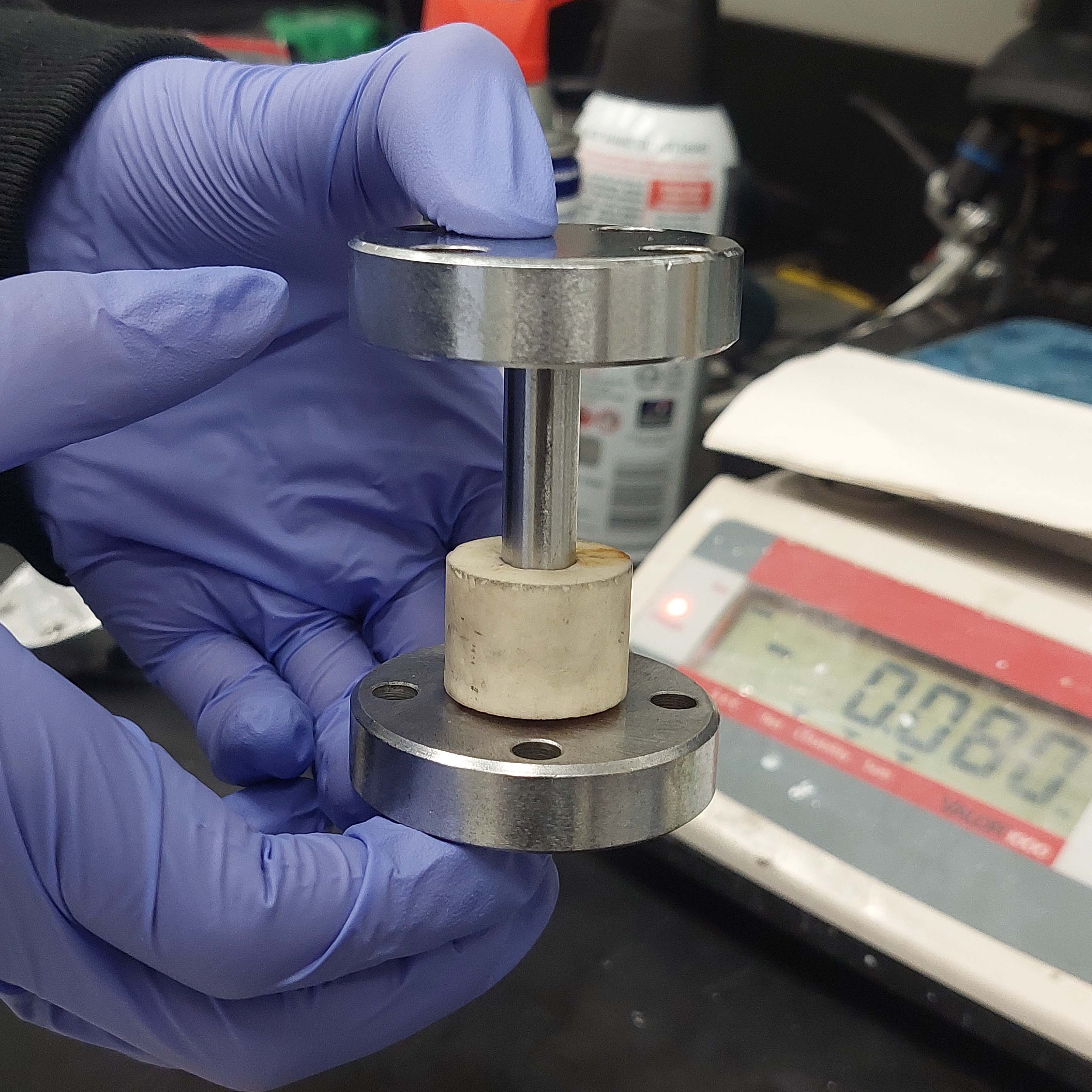News Story
Lighter, Safer and Stronger Batteries Could Power the Smart Devices of Tomorrow

Lighter and safer smartphone devices could swoop in the market following a recent breakthrough made by Department of Chemical Biomolecular Engineering (CHBE) researchers developing emerging battery technologies.
The new technology addresses the main challenges slowing down the adoption of solid-state batteries: the formation of lithium dendrites—which lead to short circuits—and the instability of high-voltage cathodes, which reduces the cycle life and energy density of batteries. Published in the journal Nature Energy, the study led by CHBE Professor Chunsheng Wang aims to improve performance and reduce the size of consumer electronic batteries.
In Wang’s latest work, the study proposes an enhancement to the battery’s key component, the polymer electrolyte. The technology would blend two chemical components: a lithium polymer-in-salt and a fluorine diluter, which effectively suppress lithium dendrites and stabilize high-voltage cathodes. Their work seeks to ultimately unleash a new generation of higher-energy, safer and smaller smart devices.
Each design element holds different functions. The polymer-in-salt acts as the dendrite suppressor: when activated, the component forms a protective layer—a barrier that blocks the lithium dendrites from causing a short cell circuit. It also facilitates the quick transport of lithium ions throughout the battery, a quality known as high ionic conductivity, which in turn generates a fast-charging device. In combination with the fluorine diluter, the electrolyte gains mechanical strength, making it flexible and resistant to the dendrites.
While these membranes go widely unnoticed by most electronics users, they hold an essential role in their device’s performance. The electrolyte acts as a transportation medium for lithium ions throughout the battery’s interface, which enables the charging and discharging cycles. It also separates the negative and positive conductors of the battery, maintaining the safety and stability of the device.
Wang’s contribution was a joint study with CHBE Professor Srinivasa Raghavan and collaborators from the University of Illinois Chicago, the Canadian Light Source and Brookhaven National Laboratory.
It presents the first high-performing solid-state lithium battery that uses polymer electrolytes. In achieving these goals, researchers created a successful strategy that overcame the low ionic conductivity and instability challenges that comes with conventional polymer electrolytes.
“We proposed the design principle of solid polymer electrolytes, which hasn’t been done before,” said Weiran Zhang, a doctoral student at the Department of Materials Science and Engineering and first author of the study. “This will pave the way to design polymer electrolytes that are stable with lithium metal and high-voltage cathodes.”
While the group has conducted extensive research on solid-state batteries for electric vehicle applications, this electrolyte is aimed at improving the performance of consumer electronics. The proposed battery electrolyte design could unveil a new generation of faster-charging, smaller batteries that would reduce the size of devices such as cellphones, laptop computers, smart watches and others.
Following this recent breakthrough, Wang’s group will aim to reduce the thinness of the solid electrolyte to enhance energy density, and will explore ways to reduce the flammability of the emerging batteries.
Read the study in Nature Energy, nature.com/articles/s41560-023-01443-0
Published January 12, 2024









